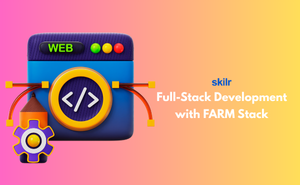👇 CELEBRATE CLOUD SECURITY DAY 👇
00
HOURS
00
MINUTES
00
SECONDS

The FARM stack is a modern development approach that combines FastAPI (for backend services), React (for building user interfaces), and MongoDB (for databases). Together, they form a powerful toolkit for creating dynamic and scalable web applications. FARM is known for its performance and ease of use, making it perfect for developers who want to quickly build and deploy apps.
This certification helps learners understand the full cycle of app development using FARM. You will learn to design the frontend with React, connect it to backend APIs using FastAPI, and manage application data with MongoDB. It prepares you to become a versatile developer capable of building end-to-end applications that work seamlessly.
This exam is ideal for:
Industry-endorsed certificates to strengthen your career profile.
Start learning immediately with digital materials, no delays.
Practice until you’re fully confident, at no additional charge.
Study anytime, anywhere, on laptop, tablet, or smartphone.
Courses and practice exams developed by qualified professionals.
Support available round the clock whenever you need help.
Easy-to-follow content with practice exams and assessments.
Join a global community of professionals advancing their skills.
FastAPI is faster, modern, and great for APIs, though Django is more full-featured.
The FARM stack focuses on React, but concepts apply to others too.
It’s a combination of FastAPI, React, and MongoDB for building web apps.
It’s modern, fast, and highly scalable for real-world projects.
Yes, FastAPI is built on Python.
Yes, React is a JavaScript library for building frontends.
Web developers, students, freelancers, and software engineers.
Social platforms, e-commerce sites, dashboards, and custom apps.
Yes, it’s simpler than relational databases and widely used in modern apps.
Absolutely—it’s designed to scale with business needs.